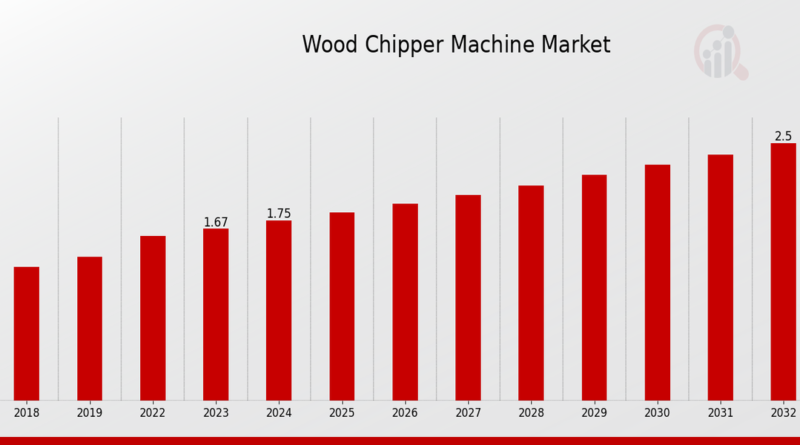Wood Chipper Machine Industry: A Deep Dive into Opportunities & Challenges
Introduction
Wood chippers are essential machines used in landscaping, forestry, and agriculture to reduce wood waste into smaller chips. These machines play a crucial role in recycling organic waste, producing biomass fuel, and maintaining clean worksites. The global Wood Chipper Machine Market is experiencing steady growth due to increasing demand for sustainable waste management solutions and the rising adoption of wood chips in various industries.
In this blog, we’ll explore the latest trends, key market drivers, challenges, and future opportunities in the wood chipper industry.
Market Overview
- Rising demand for biomass energy (wood chips are used in power plants and heating systems).
- Government initiatives promoting sustainable forestry practices.
- Growth in landscaping and urban green projects.
- Expansion of the construction industry, leading to higher wood waste generation.
Types of Wood Chippers
- Disc Chippers – Ideal for large-scale operations, offering high efficiency.
- Drum Chippers – Best for processing logs and branches with uniform chip size.
- Portable Chippers – Growing demand due to their mobility and ease of use in small-scale applications.
Key Market Trends
- Electric and Hybrid Wood Chippers Gaining Popularity
With increasing environmental concerns, manufacturers are introducing electric and battery-powered wood chippers that produce zero emissions. These machines are quieter and more efficient, making them suitable for urban areas with noise restrictions.
- Smart Chippers with IoT Integration
Advanced wood chippers now come with IoT-enabled sensors that monitor performance, maintenance needs, and fuel efficiency. This technology helps businesses optimize operations and reduce downtime.
- Rising Demand from Emerging Economies
Countries like India, Brazil, and China are witnessing rapid growth in wood chipper adoption due to:
- Increasing urbanization leading to more landscaping needs.
- Government policies supporting biomass energy.
- Expansion of the paper & pulp industry, which uses wood chips as raw material.
- Rental and Leasing Services on the Rise
Many small businesses and landscapers prefer renting wood chippers instead of purchasing them outright. This trend is boosting the equipment rental market, especially in North America and Europe.
Challenges in the Wood Chipper Market
Despite growth, the industry faces some hurdles:
- High initial costs of industrial-grade chippers.
- Lack of skilled operators in developing regions.
- Strict emission regulations affecting diesel-powered models.
Future Opportunities
- Biofuel Production – Wood chips are increasingly used in biofuel manufacturing, opening new revenue streams.
- Automation & AI – Future chippers may incorporate AI for better chip quality control and automated feeding systems.
- Sustainable Forestry Partnerships – Companies collaborating with reforestation projects to promote eco-friendly wood chipping.

